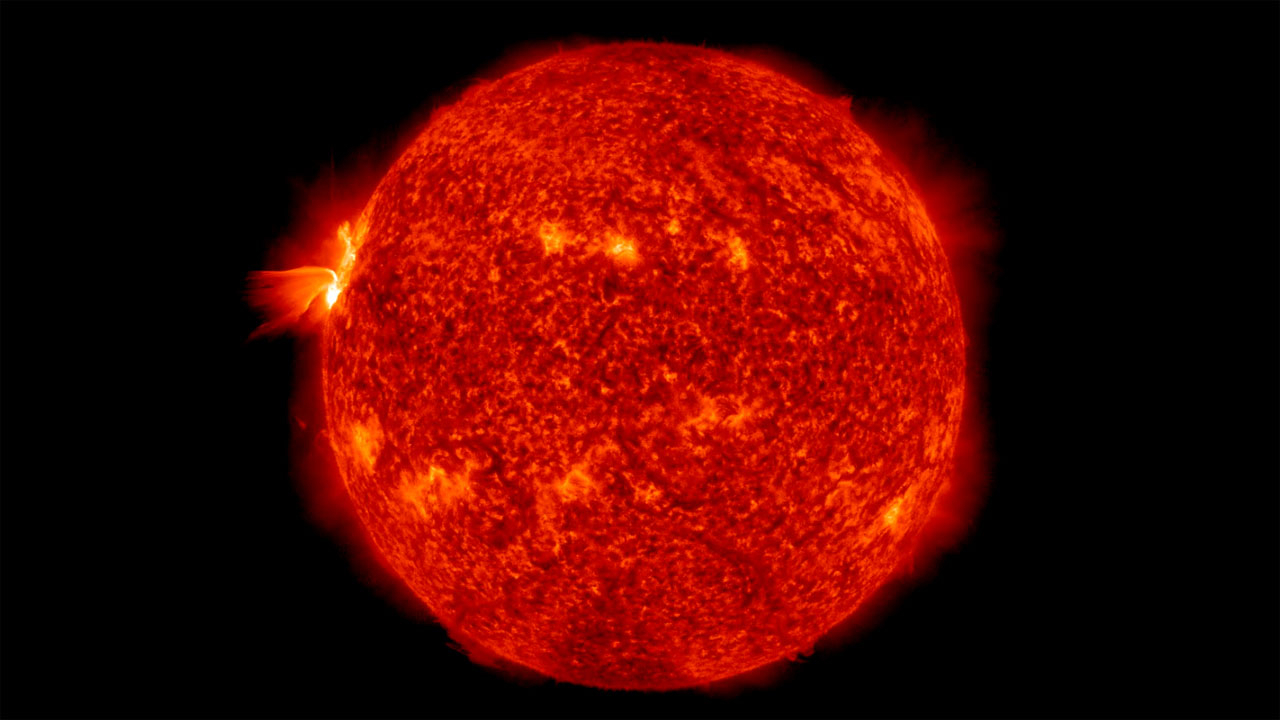Solar storms could affect train safety by glitching railroad signals

Safer train travel requires tracking solar storms, a new study urges.
Powerful eruptions from the sun could cause accidents during peak train-travel times by interfering with electrical signaling stations, potentially switching railroad indicators from red (stop) to green (go), according to the research.
"This is obviously very significant from a safety perspective," study lead author Cameron Patterson, a physics researcher at Lancaster University in England, said in a statement on Monday (Dec. 11). "We found that space weather events, capable of triggering faults in these track circuits, are expected in the U.K. every few decades."
Related: The worst solar storms in history
Risks to railways and other infrastructure may be particularly high when the sun reaches a peak in its 11-year activity cycle, as it is doing now. Electrical currents on the sun can twist and snap, causing particle ejections that travel along Earth's magnetic lines. This activity may induce auroras and, if particularly strong, interference to radio or electrical equipment.
The study modeled two United Kingdom railroad routes via computer: the Preston to Lancaster section of the West Coast Main Line, and the Glasgow to Edinburgh line. (These tracks are among those that use 50,000 signaling track circuits controlled by electricity between rails.)
While the U.K. was the focus of the study, the researchers point out that other worldwide jurisdictions have been greatly impacted by past solar storms. Examples include power outages in the Canadian province of Quebec in 1989 and the Swedish city of Malmo in 2003, each of which affected millions of people.
Breaking space news, the latest updates on rocket launches, skywatching events and more!
Further back in history, the famous "Carrington Event" of 1859 disrupted telegraph lines and railway signals around the world.
Signal switching may not necessarily cause an issue. If a solar storm flips a green signal to red, for example, it would just make a train under motion come to a stop. What would be worse, however, is if the signal switches from red to green — implying it is safe to go when in reality it is not.
Worse, the study suggests that "wrong side" failures (the ones that encourage stopped trains to continue) would happen at a lower geoelectric field strength. In other words, the researchers say, a weaker storm from the sun could induce these "wrong side" situations every few decades.
The European Space Agency, NASA and many other entities keep a close eye on the sun's activity for exactly this reason. They use a network of satellites and local alerts to advise of potential impacts to radio communications.
"Other industries — such as aviation, electricity generation and transmission, and the space sector — are considering the risks to their operations, and exploring how these [storms] might be mitigated. It's important that the rail sector is included in this planning," Jim Wild, professor of space physics at Lancaster University, said in the same statement.
A study based on the research was published Monday in the journal Space Weather.

Elizabeth Howell (she/her), Ph.D., was a staff writer in the spaceflight channel between 2022 and 2024 specializing in Canadian space news. She was contributing writer for Space.com for 10 years from 2012 to 2024. Elizabeth's reporting includes multiple exclusives with the White House, leading world coverage about a lost-and-found space tomato on the International Space Station, witnessing five human spaceflight launches on two continents, flying parabolic, working inside a spacesuit, and participating in a simulated Mars mission. Her latest book, "Why Am I Taller?" (ECW Press, 2022) is co-written with astronaut Dave Williams.
